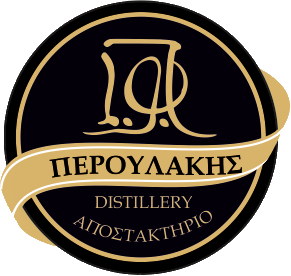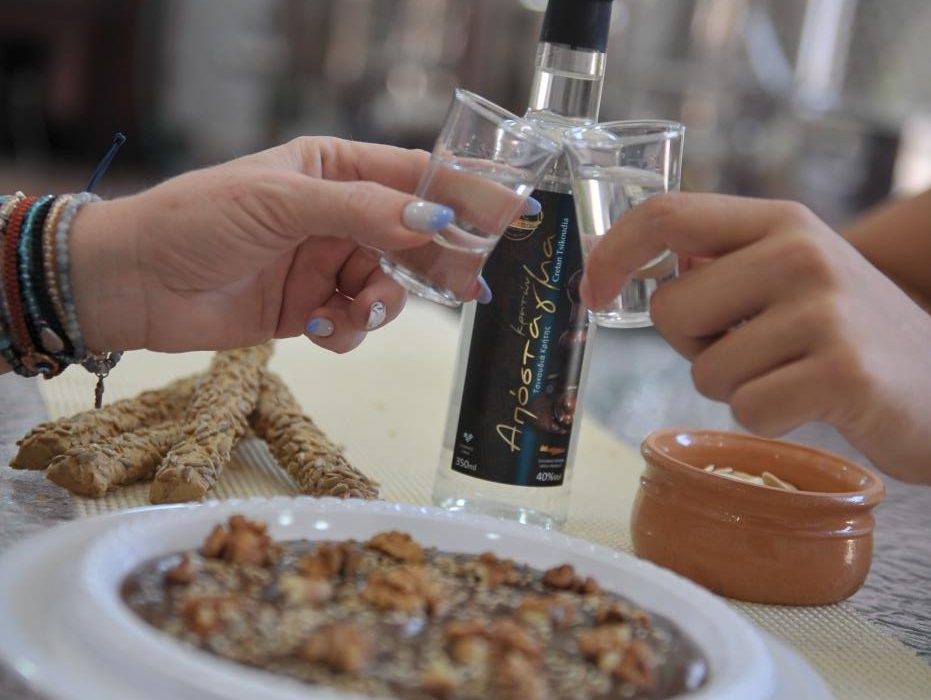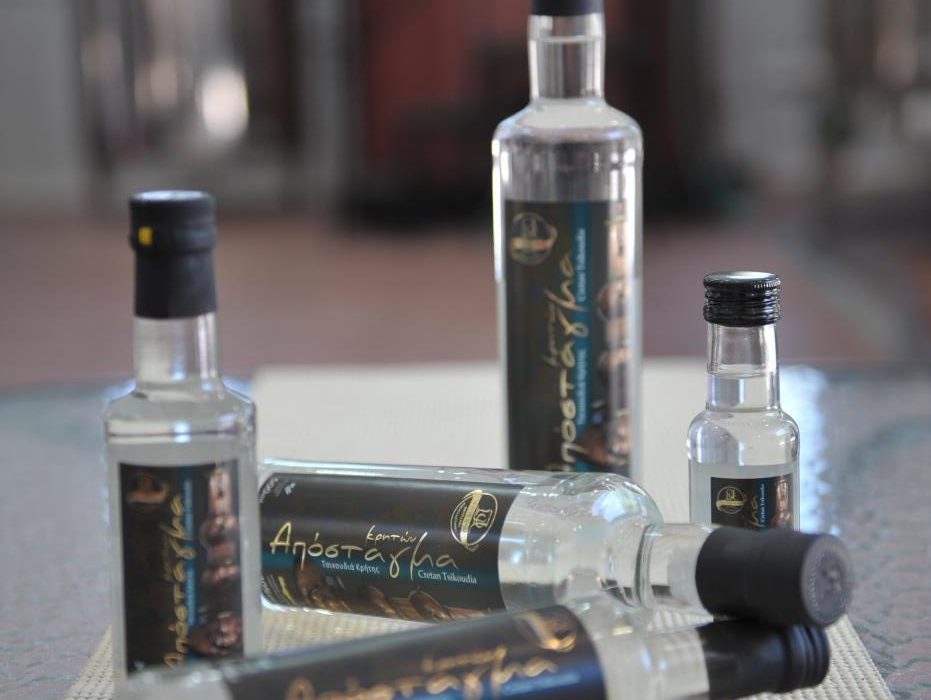Tsikoudia – Raki
Every autumn, after the grape harvest, a variety of wine celebrations start all over Greece. Then, the manufacturing of the tsikoudia begins. The custom of “rakokazano” was instituted by Eleftherios Venizelos in 1920, in which case special licenses were granted to farmers in order to financially support them through the production of tsikoudia. As the raw material in the “rakokazano”, the chikouda or grape marcs (pulp grapes), remnants of grape pressing to get the must out. As the cauldron begins to boil, a drop of droplet begins to flow the first body of the distillate, the protoraki (first tsikoudia), very strong raki, pure alcohol. As long as the distillation continues, tsikoudia gets the right proportions and grades. Usually the cauldron “closes” about 40 alcoholic degrees. The fragrant tsikoudia, still scarce, gives the slogan for a great feast.
The modern way of manufacturing tsikoudia from industrial units is carried out by the fractional distillation method – discontinuous distillation mainly- where high-quality steam turbines are used, fully electronic, adjustable and controlled. This allows the production of a high quality, multi-distilled product and purity, reducing the undesirable substances of distillation to a minimum and allowing the producer to split the heads and tails and keeping only the heart of the distillate.
Good tsikoudia is the queen of drinks, because apart from enjoyment, on the one hand it is pure, that is to say, it has no dyes and industrial alcohols (alcohol produced from potatoes or sugar beet, etc.) and on the other hand it has anxiolytic and relaxing properties with the result that our heart and spirit will be glad, to let us out of torturous thoughts, so help us to relax, to stimulate appetite, digestion and the warmth of our body.
Served in small glasses and consumed purely or with ice, but usually accompanied by nuts, sweets and snacks of fish or meat and always with good company.



